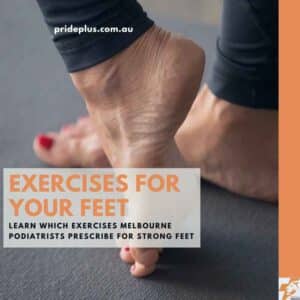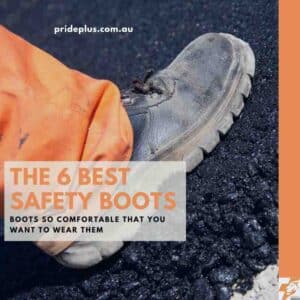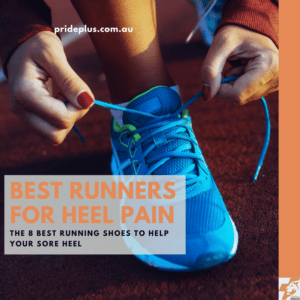If you have diabetes you’ve probably had plenty of well meaning conversations with your doctor about your feet. You’ve had them checked by your podiatrist and you’re doing your best to keep your blood sugars under control. But what about shoes? Do you find getting the best diabetic shoes difficult?
First, what even is a diabetic shoe? Is it just a shoe who’s owner has diabetes or are there some magical features that help improve your blood sugars in there?
Or do you need specialised diabetic shoes that look and feel different from someone’s feet who does not have diabetes? That ever shrinking majority (in Australia that is) of non-diabetics.
Here we go, podiatry to the rescue to help you find the best diabetic shoes for your feet.
Need to get your blood sugar levels down?


Check out Sugar Burners🔥
What is a diabetic shoe?
A good question to ask is what actually is a diabetic shoe?
In Australia we don’t have any clear standard that a shoe is just for someone who has diabetes. There are a couple of manufactures who do claim to make shoes that are specialised to help diabetic feet out. Mostly, these shoes have the ideal features that everyone should have in a shoe, with a couple of extras to help out if required.
Ideal shoe features
These are the ideal shoe features that everyone should aim to have in their shoes. Whether you have diabetes or not.
- Right size (length, width and depth)
- Your shoe size changes. Your foot gets longer, wider and often deeper too as you age. And shoe companies make different sizes when compared to each other. You’re not necessarily a size 9 in all shoes, and you definitely won’t be a size 9 in 30 years time too.
- Right fit
- Size and fit are similar, but you can have a good sized shoe for your foot that doesn’t fit right if your foot has weaker toes, or stiff ankles meaning it’s hard to get the shoe on and keep it on.
- Fixation
- Your shoes should hold onto you, not you hold onto them.
- Laces, straps, buckles, Velcro, zips are all much better than slip-ons.
- Sole
- The midsole and the outsole of your shoe should be stable, bend where your toes bend and not too slippery.
- Like goldilocks, you probably don’t want your sole too high, too low, or too pitched with a high heel.
- Look
- The most underappreciated feature of a shoe for us podiatrists is the look. Your great fitting, sized and supportive shoes aren’t going to help you out if you don’t like the look and they don’t get worn. While there sometimes needs to be a compromise. When you must wear certain shoes for certain activities. Ideally you should want to wear your shoes because of how they make you feel. And this comes down to the look of them for many of us.
- Comfort
- Your ideal shoe is comfortable!
Ideal diabetic shoe features
The extra features that are good for those with diabetes are really if you have a few extra changes to your feet that can occur. These changes can affect feet that don’t have diabetes too, but it’s just more likely if you have diabetes, and even more likely if your diabetes control is sub-optimal.
- Seam free
- If you have peripheral neuropathy then you might not be able to feel harsh seams in shoes rubbing. You could miss that blister forming. That lesion could get infected. Bad times.
- Flexible uppers
- With diabetes the shape of your foot can change, particularly if you have motor neuropathy or charcot neuroarthropathy. The extra depth in some diabetic shoes is a welcome feel.
- Flexible uppers, materials such as neoprene allow all sorts of lumps and bumps to be accommodated and fit different shaped diabetic feet.
Diabetic Sports Shoes
First off, here are our top 4 diabetic athletic shoes. These are universal recommendations for both men and women. These shoes are not marketed as diabetic specific shoes, they’re the best options for support in a variety of fits.
The reason why we feel strongly that these are the best diabetic sports shoes is that your physical activity is so important when you have diabetes. Your need to exercise, both cardio and weight training is heightened.
To exercise at your best you need the best sports shoe option to provide a comfortable, stable and supportive platform. All shoes have removable liners so you can easily place your foot orthotic inside if you need. While these are categorised as running shoes, they are also walking shoes too. If you’re moving forwards, these four are great diabetic footwear options for you.
Brooks Ghost
The Ghost from Brooks is an exceptional all rounder. It’s light enough to be a brilliant running shoe and supportive enough to handle long walks or extended time on your feet.
More positives are in the sizing options. Across Men’s to Women’s there are 4 different widths available and 10 + colour schemes.
If you’re active, have orthotics and need a shoe for your fitness the Ghost is a great option for you. If you’re on the heavy side we’d suggest the Wave Sky or the Dyad instead however.
Mizuno Wave Sky
Plush clouds is what Mizuno want you to think of with the Wave Sky. They’re on the mark too. Both the Men’s and Women’s versions are available in 2 widths and a couple of interesting colours.
The cushioned and supportive sole is what you’re going to get the most out of with the Wave Sky. Mizuno have created a shoe that handles well with or without an orthotic.
While you can use the Wave Sky for more than just running and walking, the lifespan will decrease if you’re lifting weights in these shoes. The soft cushioned foams like the repetition of moving in a straight lines more than standing still with heavy extra weight. You don’t want to diminish your great shock absorption properties faster than you need.
Brooks Dyad
Walkers, joggers, people who spend long periods of time standing and those who are a little heavier love the Dyad from Brooks. The Dyad is still a capable running shoe however it packs in some extra cushioning and a stable sole that lasts longer than the lighter Ghost.
4 widths are available in a number of colours. Very useful for many is the Dyad comes in full leather variant (they call it the Dyad Walker) which is available with laces or dual Velcro straps.
The perfect all round shoe for lots of people with diabetes.
Asics GlideRide
This shoe is a little controversial as a diabetic sports shoe as it doesn’t have a lot of options with fit. There aren’t any widths available for the GlideRide so if your foot is a little wide or narrow you might have to look elsewhere.
But, if you do fit into the GlideRide you’ll find a shoe that is supportive, accommodates an orthotic well and has an extra large forefoot rocker compared with the other shoes listed here. The forefoot rocker encourages forward movement and reduces the peak loads on the ball of the foot. The downside is, if your balance isn’t great you’ll be wearing a shoe that’s always wanting you to move forwards.
Women’s Diabetic Shoes
Here’s our podiatrists top 3 diabetic footwear for Women.
Propet Ped Walker
The Ped Walker is very gentle on your foot. The upper around the forefoot is soft Lycra to reduce pain or development of corns and ulcers around the tops of the toes. Fixation is taken care of via a single Velcro strap.
There’s also two options of colours and a few widths as well to help lots of different feet enjoy the comfort (or the reduced risk of ulceration) from the soft upper of the Ped Walker.
As you can see from the following video, the Ped Walker has been around for a long time. When it works, don’t muck with it.
Dr Comfort Flute
The Flute is a hybrid upper shoe from Dr Comfort. It combines the rigidity and support from a synthetic leather around the lower part closes to the sole. This reduces side to side movement and keeps you secure in the shoe. The top of the upper is Lycra. Very useful for you if your foot shape changes throughout the day from swelling. Lycra also comes in handy if you have a high volume foot. High arches or retracted toes that are prone to corns on the top of them.
Available in 4 widths and a colour palette of black, black or black. These are a Mary Jane style diabetic dress shoes for women who need comfort and support.
Dr Comfort Paradise
The Paradise from Dr Comfort comes in 4 different widths and 3 different colours. With a seam free inner and a removable liner you will be able to fit your foot orthotic and many different shapes of feet into this shoe.
The Paradise has some interesting patterns across the dorsum of the forefoot for a little bit more jazz in your diabetic shoes than a standard Mary Jane.
The soles of all Dr Comfort shoes have good levels of cushioning and support but this comes at a cost. To make the soles extra comfortable they must wear and compress. This means your feet last longer with less wear, but your shoes will wear out quicker. With everyday use (ideally shoes should only ever be used every 2nd day) you may find that getting 12 – 18 months out of a pair is the max you will get.
Men’s Diabetic Shoes
Here’s our top 3 Men’s diabetic shoes according to our podiatry team.
Propet Four Points Comfort
The Four Points Comfort would be the most popular purely diabetic focussed Men’s shoe I’ve seen over the last 10 years as a podiatrist.
Wide, black and Velcro to hold on to you. The leather around the lower parts of the upper means there’s good support. A removable insole with plenty of space for orthotics and sensitive feet. Also, Propet has pretty good distribution in store with independent shoe shops as well as large chains (like The Athlete’s Foot) stocking them.
Also, this video is a gem. Kyle has the effortless grace of a old fashioned movie start. He really sells the shoes. In the video he’s demonstrating the lace up version, the Comfort has the Velcro strap.
Dr Comfort Frank
Before we talk about the Frank from Dr Comfort, can we just pause of a moment and marvel at the naming of the Men’s shoes? Frank, Brian, Douglas, Edward, Mike and then the Fisherman… Each shoe named after strong, anglo traditionally male names. But the team at Dr Comfort couldn’t think of a person who represents the Fisherman? Surely in Australia this pair of shoes could be called the Rex?
Ok, back to the shoe the Frank.
Frank comes in 3 widths and 2 colours. Unlike some Diabetic shoes Frank (just like all the Frank’s I know) is a little more fashionable with a single Monk Strap style Velcro fixation point.
Dr Comfort Brian
Brian is reliable. He is consistent. Brian is not going to turn up with any flare or fanfare, he just gets the job done. The Brian from Dr Comfort is such a Brian.
3 withs, 2 colours and an extra depth variant means everyone can fit into a Brian from Dr Comfort. Using Lycra from the midfoot down to the forefoot the Brian will not irritate the top of your feet and can change size as your feet do throughout the day.
A solid heel counter with leather around the rearfoot means that you can still wear your custom orthotics and have great support if you need it. Many think of the Brian as a therapeutic shoe. Medical grade footwear. We like to think of Brian as a Brian. Reliable, consistent and gets the job done.
Diabetic Shoes FAQ
Do I need diabetic shoes?
If you have diabetes in Australia you definitely need shoes. As you can read above, there’s lots of different features that you *might* need depending on your individual circumstances. You’ll definitely need an athletic shoe for your vital physical activity. Other shoes for diabetics that might be important will depend on your foot risk level.
Patients with diabetes should wear shoes to avoid stepping on any foreign objects. Sharp things that might damage your feet and cause serious foot problems.
Do diabetic shoes really make a difference?
Getting the right diabetic shoes really does make a difference. It can mean the difference between living a normal life and serious foot issues. With diabetic ulceration and amputation usually starting with lesions to the feet, ensuring your shoes protect and reduce the risk of problems is paramount.
Getting shoes that are part of your management plan or solution to all sorts of problems will help you avoid foot pain, manage foot deformities and accommodate your orthotics.
So yes, having comfortable shoes will make a difference, more so than just keeping your feet dry in winter.
How does diabetes affect my feet?
Diabetes can affect your feet in a couple of serious ways. Changes to circulation or sensation can lead to ulcers, amputation and deformities. It can also increase your risk of falls. If you have diabetes you simply must know your foot risk level and have a plan to manage them.
Find out your diabetic foot risk level online here.
Are there different types of diabetic shoes?
We’ve grouped the diabetic shoes in this post into a couple of different categories. There’s your athletic shoes you wear when you exercise. Remember we all must get 30 minutes of cardio done a day and two sessions of weights per week.
Then there’s the more therapeutic footwear that helps keep your feet healthy if you have more specific needs. Usually related to diabetic neuropathy, foot deformity or sore feet.
Do I need diabetic socks?
Diabetic socks are mostly seam free and looser around the cuff to reduce cutting into your calf. For some this is a necessity, for others it’s more of a nice to have.
Our favourite diabetic sock is from Fresh Feet Sock Co. They’re made from bamboo a natural fibre that keeps your feet dry if you’re prone to sweaty feet.
What about diabetes shoes for flat feet?
Flat feet are all able to be accommodated in the shoes we’ve mentioned in this post. The athletic footwear in particular all have the key features that flat feet need to keep your feet comfortable.
If you do have a foot condition like flat feet it’s best for you to have a clear diagnosis and plan from your podiatrist so that you know what you can do to avoid further foot complications.
Other important diabetes information
It’s not just shoes is it? There’s the right diabetes exercises, how to manage your medication, as well as understanding your risk of foot complications.
About the Author(s)

Melbourne based podiatrist Tim Mulholland and his team put this guide together to help you find a comfortable pair of shoes for your feet if you have diabetes. These shoes aren’t going to be your only shoes, but if you wear shoes with these features when you’re most active it’s a start.
Also, a word of warning – these shoes and this advice is general in nature. It’s not specific to you and your exact needs. For that kind of personal advice you would need to see your podiatrist for a one on one session. To get that personal advice you can book in for your session at any of our clinics.




